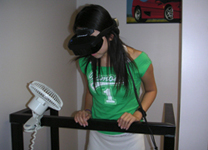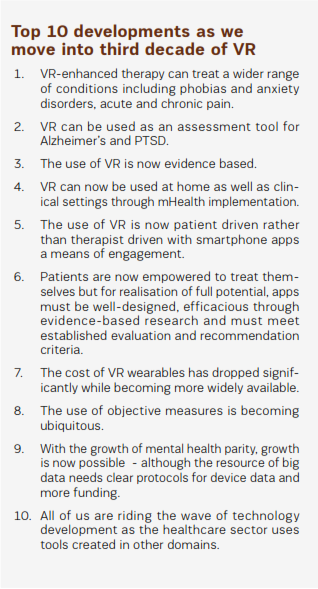By Jessa Gamble
In the vast arboretum near my home, ducks clamor on pond shores as shrieking children throw bread. The bike path bustles with university students, and, in winter, the adjacent canal teems with skaters. But for me, any health benefits that accrue from a brisk walk in the park are—I’m convinced—counteracted by the stress of encountering an off-leash dog.
My profound discomfort with canines may not rise to the level of phobia, but it is usually enough to turn a pleasant experience into a trial. When I see a dog, I may abruptly take a wide detour, or turn around altogether. Nevertheless, while easy, this approach probably isn’t helping me overcome my fear. According to science, the best solution to my dog problem is more dogs.
Exposure therapy, a form of cognitive behavioral therapy, involves subjecting patients to increasing amounts of things they fear, or otherwise hope to avoid. It is one of the great success stories of mental health, and it’s not just for phobias. Research on cases of intense fear and even traumatic brain injury shows that for a number of problems, the only way out is through.
After a concussion, for instance, many people find themselves unable to work. Reading for any length of time kicks off bouts of dizziness and a bright light could bring on crashing headaches. Even thinking for any length of time is exhausting. Anything but sitting still and sheltering the mind feels like a dangerous activity. That aversion to pain is perfectly natural, but it can lead to a stalled-out recovery.
Though the vast majority of concussion sufferers are fully recovered within three months or so, a “miserable minority”—5 percent or so—have persistent, debilitating symptoms. Long-term follow up shows no improvement, and even deterioration years down the road. Until recently there was no proven treatment for this seemingly permanent damage to quality of life.
The best treatment for overcoming concussions is a type of cognitive-behavioral therapy that includes going back to work for a longer workday each week, and exercising with progressively greater intensity, even if one’s symptoms come roaring back with a vengeance. Only by pushing through the misery, it seems, can the brain get back to its normal activities.
Exposure therapy is also a highly effective tool for overcoming post-traumatic stress. Reliving the battlefield from the safety of a peacetime environment has been shown to gradually remove the expectation of harm from the memory.
Ethically, for both concussions and PTSD, however, a treatment that consists of suffering is a tough sell for doctors, who have taken an oath not to do harm. The approach is one of the most underutilized treatments for PTSD, because psychologists are deeply uncomfortable with re-traumatizing their patients. And exposure therapy also holds little appeal in the short run for patients. For a concussion-sufferer, seeking out more pain feels like exactly the wrong thing to do.
Of course, many other medical treatments are also painful, and the long-term benefits are considered worth the trade-off. But in the case of exposure therapy, there is no palliative option—no anesthetic or painkiller—because the discomfort is not a side effect, it’s the main event.
Recently, a more palatable route has been introduced with virtual reality. The Virtual Reality Medical Center in San Diego, for example, offers VR therapy for all manner of fears. Heights, driving, needles and blood, spiders, enclosed spaces—you name it, they treat it. First steps in traditional phobia treatment sometimes involve imagining fearful scenarios, but a patient’s mind is naturally resistant to those thoughts and will go to some lengths to avoid fleshing out terrifying visions. Virtual reality scenarios have proved useful in social phobias, wherein patients have a debilitating fear of interacting with other people.
For social phobias, exposure therapy in the real world is hard to control, because social interactions are so complex and unpredictable. A course of virtual-reality therapy will lead the patient through a number of exercises. First they might have to approach someone on the street or walk into a party where people turn to look at them. Finally, they might have to greet guests and—one of the most common of all fears—give a speech.
The practical drawback of virtual-reality therapy is that immersive environments are expensive to create and phobias come in many varieties. If someone has a paralyzing fear of paperclips, they are unlikely to find an off-the-shelf exposure program to treat them. That’s why others are turning to augmented reality, where the real, physical world is supplemented by input—either visual or audio—from a computer.
A head-up display screen that a patient looks through, for instance, can simply overlay a real-world environment with progressively closer-moving images of that patient’s feared object. Children who fear cockroaches can build up their courage until those insects appear to be walking all over their hands. Augmented reality treatment seems to be as effective long term for small animal phobias as actual exposure to those animals.
Only 8 percent of phobia sufferers seek professional help for it, and fear of the treatment itself may be part of that. I am unlikely to subject myself to any more dogs than I already encounter in a given day, though a computerized dog sounds just about manageable. If some newer treatments are more humane, others still turn to that old maxim: No pain, no gain.
For original article, click here.



